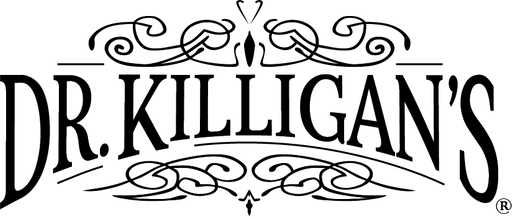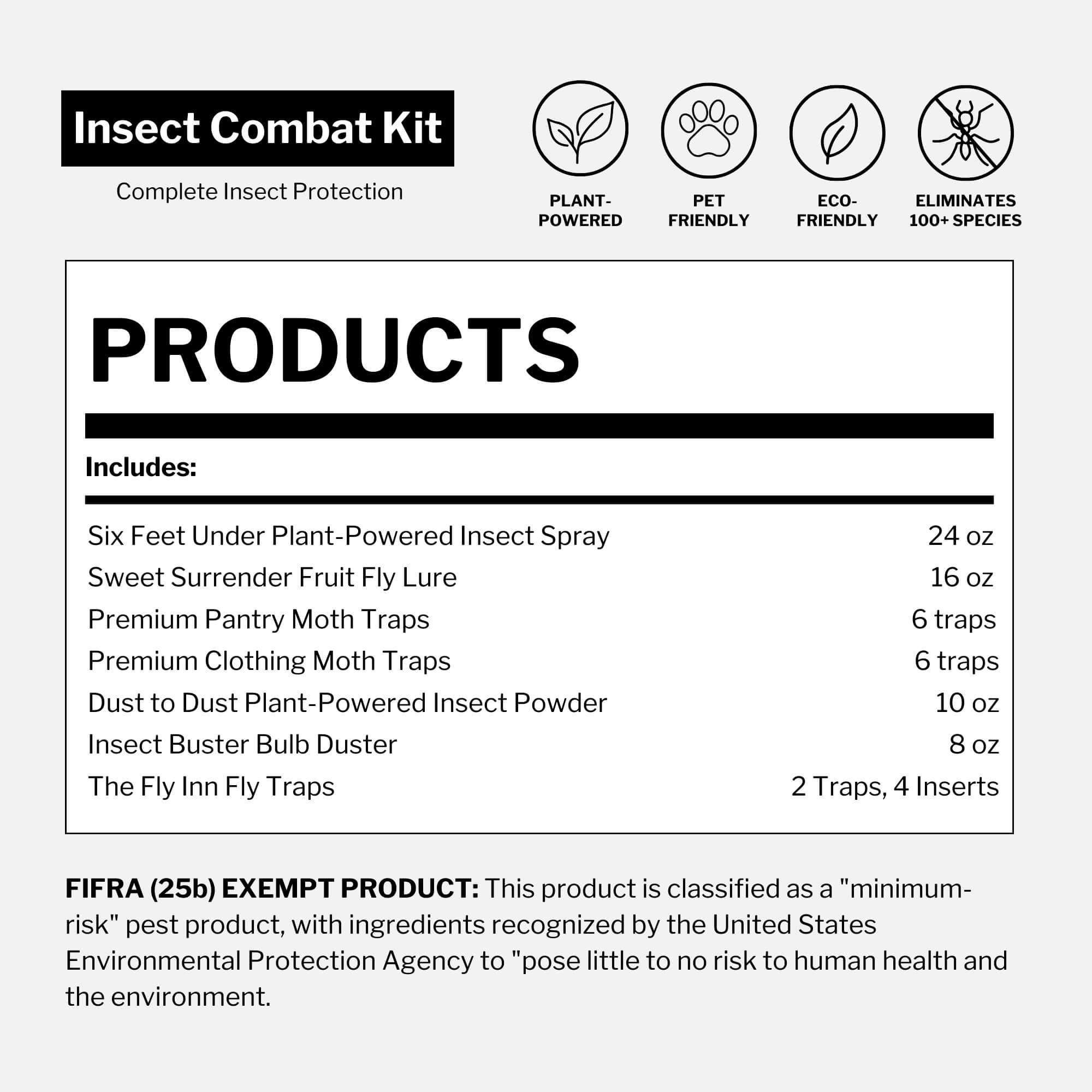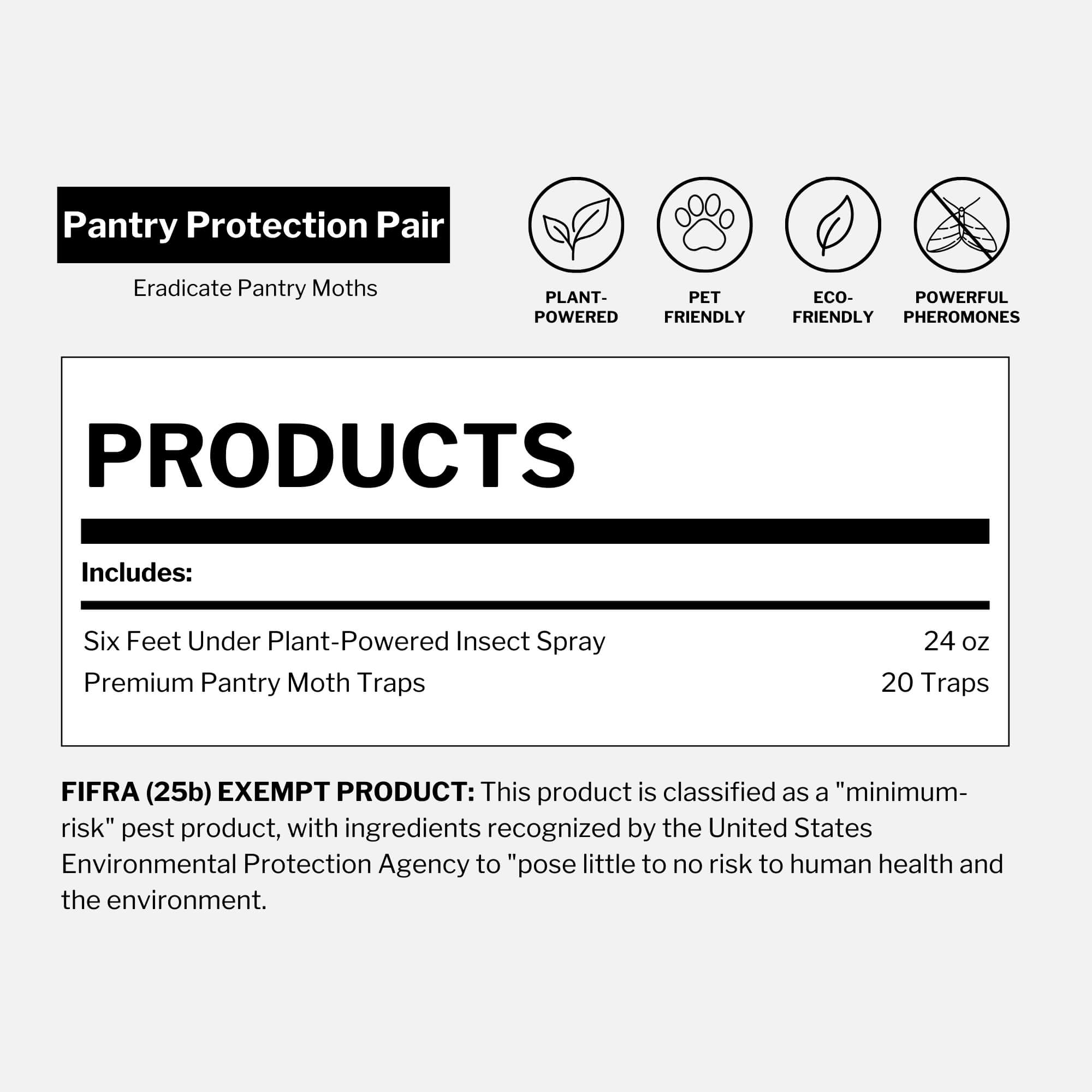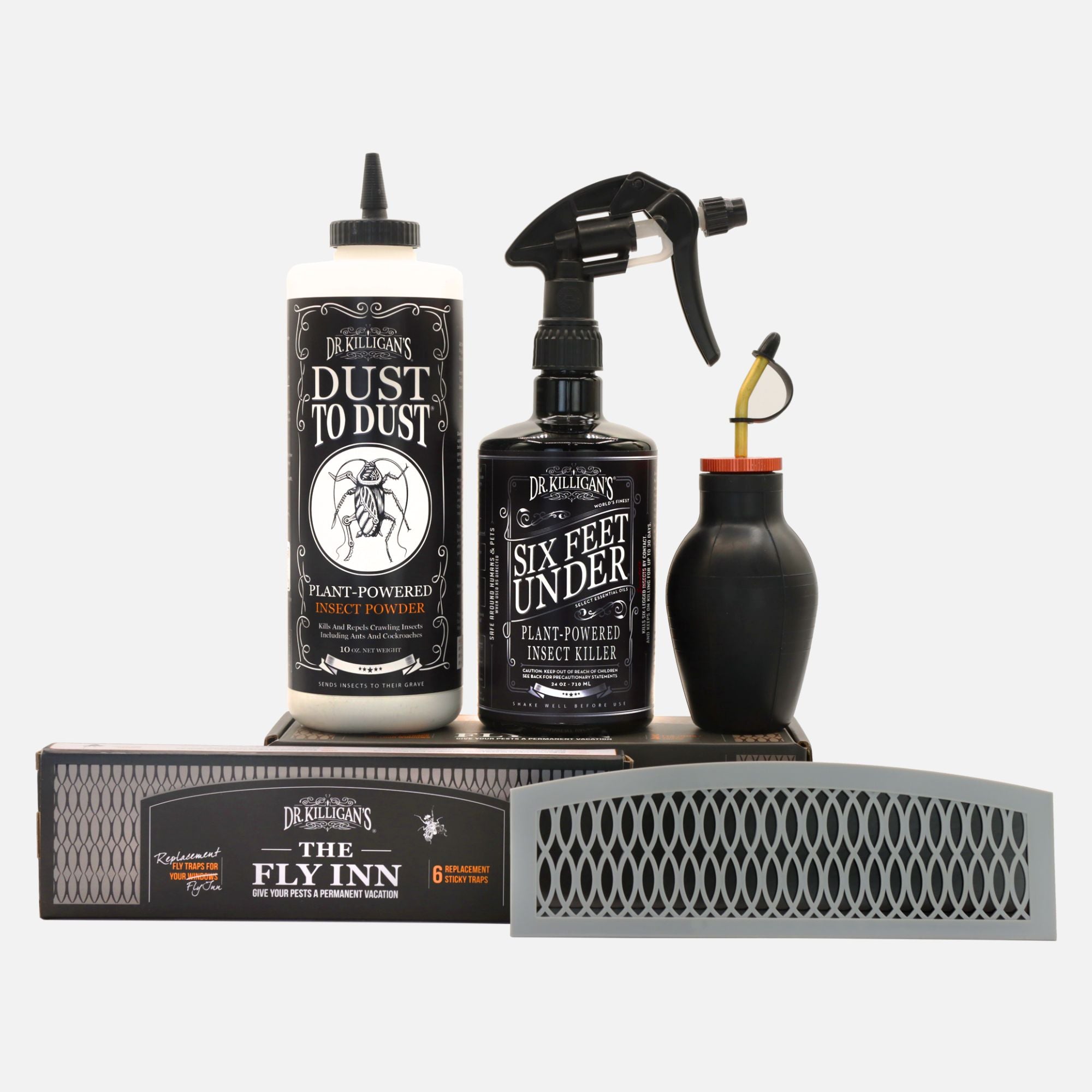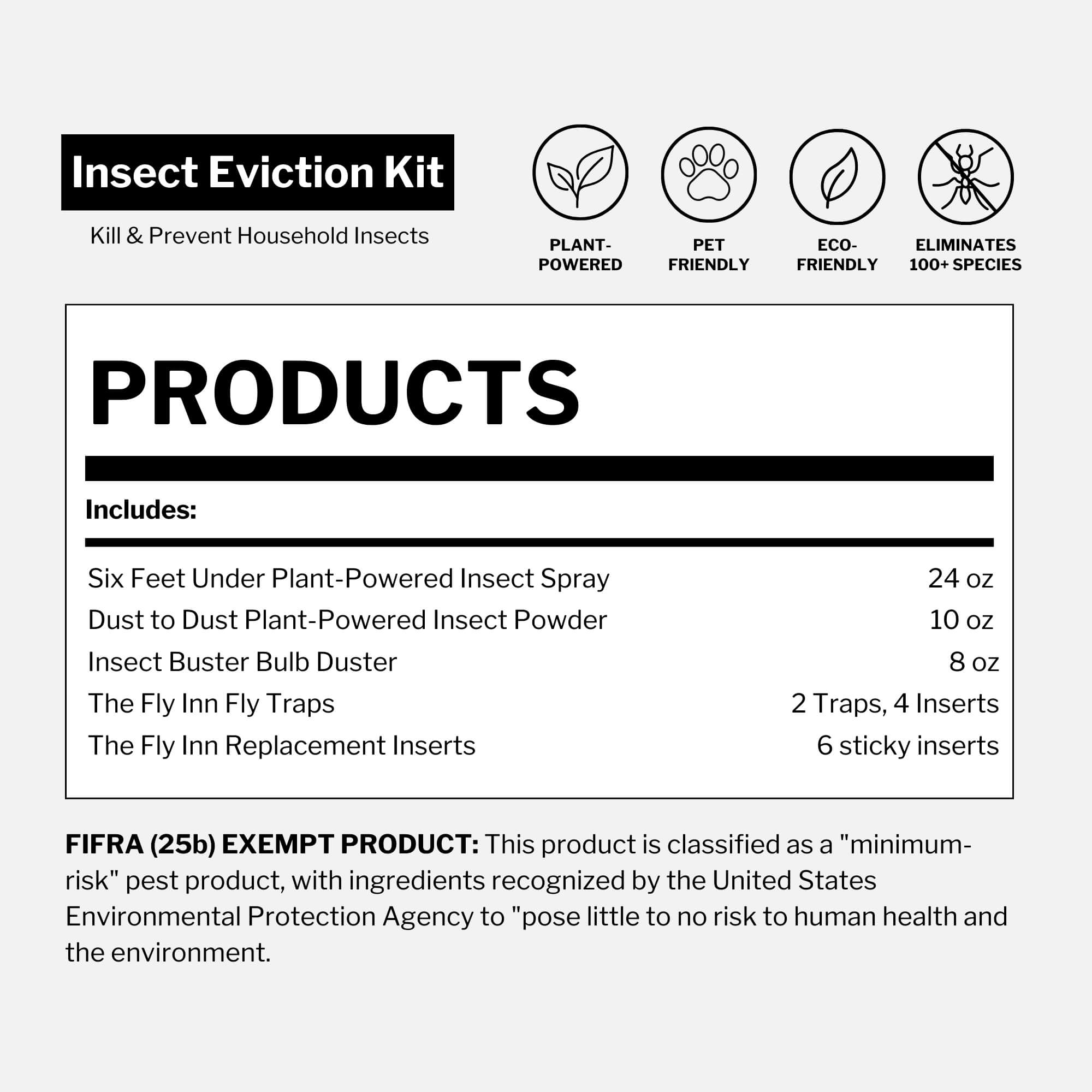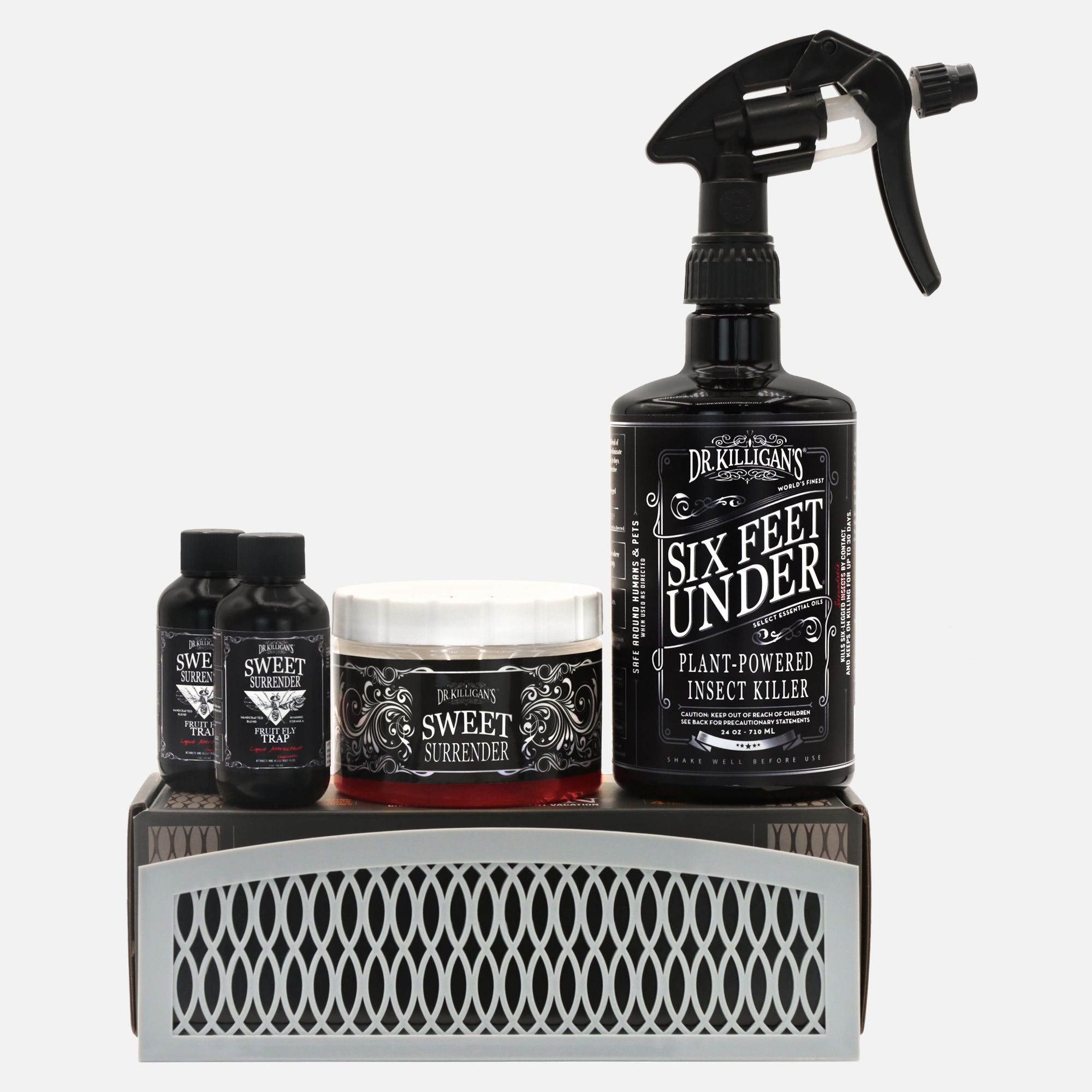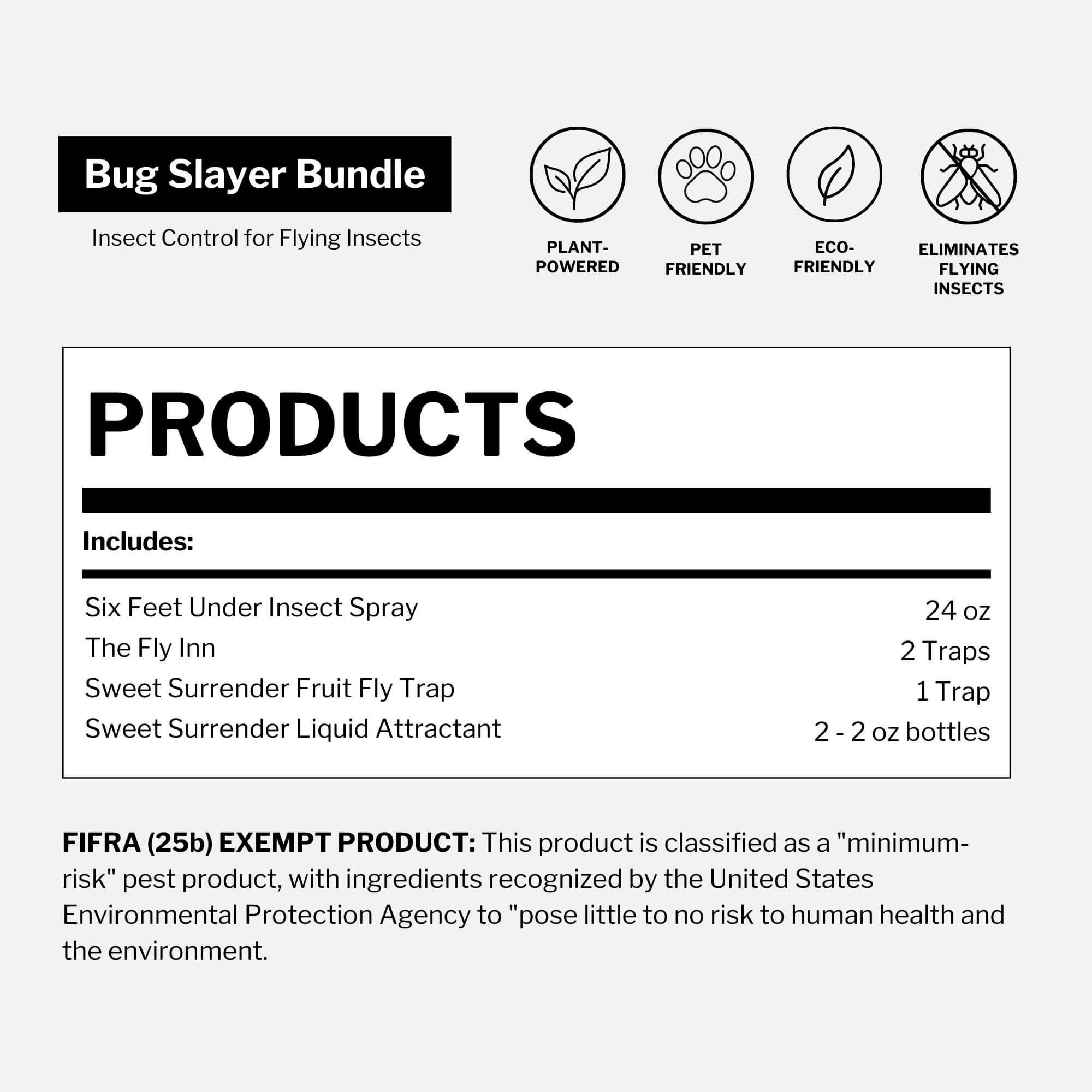Published March 18, 2025 • Updated October 23, 2025
Reviewed by Julie Miller, BA in Language Arts, Editorial Lead, Dr. Killigan’s
Labels list the active ingredients. They don’t always list the other ingredients—the solvents, fragrances and carriers that can influence exposure. Below, see what labels reveal (and what they don’t), four common actives to reconsider and how to choose more transparent alternatives.
TL;DR: Check the full ingredient list, not just actives. Prefer brands that disclose “other ingredients” or use ingredients classified by the EPA as minimum-risk under FIFRA 25(b), and follow labels exactly.
What labels reveal — and what they don’t

- Actives are listed. Federal law requires the active ingredient name and percent
- “Inerts” aren't named. Other ingredients can be trade secrets or confidential business information. They may include solvents, carriers or fragrances with risk profiles you can’t see
- Signal words ≠ the whole story. Danger, Warning, Caution reflect acute toxicity, not long-term or environmental harms
- Marketing has no standard. Marketing terms like ‘eco-friendly’ or ‘pet-safe’ aren’t standardized. Compare ingredients, not taglines
Transparency standard: At Dr. Killigan’s, we publish every ingredient, including “other ingredients” (inerts), so you can vet products on more than branding. The red flag isn’t just in the fine print—it’s when the information simply isn’t there.
Learn more: Putting customers first: The power of full disclosure
Understanding warning labels
Signal words reflect acute toxicity from a single exposure, not long-term or environmental risk.
- DANGER/POISON – Highest hazard. A taste to a teaspoonful can be fatal
- WARNING – Harmful if swallowed. Roughly a teaspoon to an ounce could be lethal
-
CAUTION – Lower acute toxicity. An ounce to over a pint could be lethal
Why inert ingredients matter
“Inert” doesn’t mean harmless. Unnamed solvents or fragrances can drive exposure, volatility and residues, yet never appear on a front label. If you can’t see them, you can’t research them. Choose products that publish full ingredient lists or use EPA minimum-risk formulations.
What “inert” can include
- Solvents that increase penetration or off-gassing
- Fragrances that mark odor or attract pests
- Carriers and stabilizers that extend shelf life

Why it matters
- You can't assess risks you can't see
- Sensitive groups may react to undisclosed fragrances or solvents
- Inerts can affect indoor air, residues and contact exposure
How to protect yourself
- Prefer brands that disclose every ingredient, including inert ingredients
- Avoid vague "proprietary blend" or "other ingredients" with no detail
- Use only as directed and minimize indoor spray drift
Pesticide exposure: what research signals
Conventional pesticides can include ingredients linked to cancer, neurological issues and respiratory problems. Reviews report associations between pesticide exposure and certain cancers, plus lab evidence of DNA damage at tested doses. Because there’s no single test that captures human toxicity across all products, ingredient transparency and careful use matter.
Research signals. A review in Canadian Family Physician reports associations between certain pesticide exposures and increased risks of hematologic cancers, including non-Hodgkin lymphoma and leukemia. A further review in the European Review of Medical and Pharmacological Sciences documents genotoxic effects (DNA damage signals) across several common pesticide classes.
Despite these risks, regulation and testing remain limited. As Senator Frank Lautenberg once put it: “Of the 84,000 chemicals on the market today—many of which are in objects that people come into contact with every day—only about 1 percent of them have been studied for safety."

Buy smart, not blind. Don’t trust taglines—scan the full ingredient list, look for disclosed “inerts” and prefer EPA minimum-risk formulations. If a product won’t tell you what’s inside, don't buy it.
"Research is seeing what everybody else has seen and thinking what nobody else has thought." – Albert Szent-Györgyi
4 synthetic insecticides to think twice about
Before you choose a product, make sure you know what’s really inside. Actives can hide behind aliases and “other ingredients” can carry risk.
How to read labels (fast)
- Search aliases: Many actives have multiple names. If one looks unfamiliar, look up synonyms
- Compare actives, not brands: The same chemical appears under many trade names—check the ingredient line
- Watch "inerts": “Other ingredients” can include solvents or fragrances. Prefer products with full disclosure
- Use CAS numbers: A CAS (Chemical Abstracts Service) ID confirms the chemical regardless of branding
- Quick-check databases: Cross-reference trusted sources before you buy
Now apply this checklist as you review the four actives below.
1. Fipronil

- Found in: ant and roach baits, some flea spot-ons
- What to think twice: persistent in water; detected in streams; harmful to songbirds; pet treatments can wash into waterways
- What to check on labels: “fipronil” (and aliases); prefer brands that disclose “other ingredients”
- Safer how-to: start with mechanical controls; use plant-powered contact sprays where appropriate; follow label directions
Evidence snapshot:
- Field work in blue and great tit nests reported more unhatched eggs and higher chick mortality where fipronil residues were present (University of Sussex, 2025)
- A nationwide study identified fipronil as one of four pesticides likely impacting the health of aquatic invertebrates in U.S. streams across multiple regions (U.S. Geological Survey (USGS), 2024)
- Studies show pet spot-on can transfer to hands and wash into wastewater (Imperial College London, 2024)
- Environmental reviews note persistence and bioaccumulation potential (Science of the Total Environment, 2022)
2. Imidacloprid (a neonic)
- Found in: flea spot-ons, termite treatments, soil/systemic insecticides
- Why think twice: highly toxic to bees; frequently detected in surface waters; pet spot-ons can transfer to hands and wash into drains; persists in soil and water with chronic effects on beneficial insects
- What to check on labels: “imidacloprid” (and aliases); prefer brands that disclose “other ingredients”

- Safer how-to: start with mechanical controls; use plant-powered contact sprays where appropriate; avoid prophylactic soil drenches; for pets, ask your vet about non-neonic alternatives and follow label directions carefully
Evidence snapshot:
- National surveys detected neonicotinoids in U.S. streams, with imidacloprid most frequently found in a coast-to-coast study (U.S. Geological Survey, 2015)
- Environmental fate reviews describe persistence of imidacloprid in water and soil, with chronic risks to non-targets including bees, birds and aquatic life (Environmental Science and Pollution Research, 2024)
- Spot-on pet treatments can transfer to hands then reach wastewater via handwashing, bathing and laundering (Imperial College London, 2022)
- Reviews report acute and sublethal effects on bees, including orientation and foraging changes (International Journal of Molecular Sciences, 2021)
3. Permethrin (a pyrethroid)
- Found in: household insect sprays, some dog flea/tick shampoos and spot-ons, head-lice treatments, certain mosquito repellents
- Why think twice: severe cat toxicity; highly toxic to fish and aquatic invertebrates; contact-toxic to bees and other beneficials; runoff can contaminate waterways
- What to check on labels: “permethrin” (or % listed); avoid any dog-only product anywhere near cats; review “other ingredients” for solvents or fragrances
- Safer how-to: try mechanical exclusion (screens, sealing), targeted baits/traps and plant-powered contact sprays where appropriate; for pets, use vet-approved, cat-safe treatments only and follow the label exactly

Evidence snapshot:
- Cats are more sensitive to permethrin and can show neurologic signs after exposure (National Pesticide Information Center, NPIC, 2020)
- High toxicity to fish and aquatic invertebrates and a bee contact hazard are documented in federal risk summaries (U.S. Environmental Protection Agency, 2006)
- Laboratory studies found permethrin can be highly toxic to juvenile fish and crayfish at very low concentrations (Transactions of the American Fisheries Society, 1978)
- Indoor use studies report persistence that can contribute to dermal and non-dietary exposure (Journal of Exposure Science & Environmental Epidemiology, 2019)
4. Cyfluthrin (pyrethroid)

- Found in: household insect sprays, lawn & garden insecticides, some pet flea products
- Why think twice: neurotoxic mode of action; highly toxic to fish and aquatic invertebrates; contact hazard for bees and other beneficials
- What to check on labels: “cyfluthrin” or “beta-cyfluthrin”; note % active and any petroleum distillates in “other ingredients”
- Safer how-to: start with mechanical controls and sanitation. For indoor spot-kill, choose plant-powered contact sprays used precisely as directed. Keep any outdoor applications away from drains and water features; never spray blooming plants visited by pollinators. For pets, use vet-directed products that avoid pyrethroids
Evidence snapshot:
- Binds to sediments, which can raise surface-water persistence and exposure risk (Northwest Coalition for Alternatives to Pesticides, 1994)
-
Cyfluthrin is a pyrethroid neurotoxicant (voltage-gated sodium channel effects) that can produce tremor-type CNS signs in mammals at tested doses (U.S. Environmental Protection Agency, 2006)
- Extension guidance advises avoiding broad sprays near drains and blooming plants; favor targeted applications where feasible (University of California ANR IPM, 2025)
-
Very high toxicity to fish and aquatic invertebrates and a strong bee contact hazard are noted in federal risk summaries (U.S. Environmental Protection Agency, 2006)
| Active | Common uses | Key risks | Likely impacts | Benefit of avoiding |
|---|---|---|---|---|
| Fipronil | Ant and roach baits, flea treatments for pets | Harm to songbirds; transfer from pet treatments to hands and wastewater | Waterway contamination; long-term bioaccumulation | Protects songbirds; reduces runoff |
| Imidacloprid | Flea treatments, termite control products, soil insecticides | Harmful to bees; frequently detected in surface waters | River contamination; ecosystem imbalance | Safeguards pollinators; limits water contamination |
| Permethrin | Household insect sprays, pet shampoos, lice treatments, mosquito repellents |
Toxicity to cats | Aquatic harm; non-target insect loss | Keeps cats safe; protects waterways |
| Cyfluthrin† | Household sprays, garden insecticides, pet flea treatments | Neurotoxic mode of action; high aquatic toxicity; bee contact hazard | Aquatic harm; pollinator risk | Reduces non-target risk; preserves water quality |
+ For pets, use only vet-directed products and follow the label exactly; avoid pyrethroids around cats. † For cyfluthrin, avoid pet use unless vet-directed; check species restrictions.
- Glyphosate (Roundup)—The International Agency for Research on Cancer (IARC) classifies glyphosate as “probably carcinogenic to humans” (Group 2A). The USGS reports glyphosate was detected at least once in 66 of 70 sampled U.S. streams during 2015–18 and its degradate, AMPA, even more frequently
- 2,4-D—IARC classifies 2,4-D as “possibly carcinogenic to humans” (Group 2B). A peer-reviewed study detected 2,4-D in pet dogs’ urine after home lawn applications, indicating realistic pet exposure pathways
- Carbaryl—The EPA warns carbaryl is highly toxic to honey bees; product labels carry explicit bee-caution language. NPIC reports carbaryl is highly toxic to honey bees and very highly toxic to aquatic invertebrates
- Malathion—NPIC states that malathion is highly toxic to bees and other beneficial insects, and is moderately toxic to fish and birds
Deeper dive: Trusted databases
Before you buy, verify.
- Pesticide Active Ingredients Database—Look up active ingredients, CAS numbers and regulatory facts
- EPA's InertFinder—See inert ingredients that may be permitted in pesticide products. InertFinder lists eligibility, not hazard
- Label literacy—Prefer brands that publish every ingredient, including “other ingredients.” If you cannot see it, you cannot research it
How to choose transparent products
- Read the full ingredient list, not just actives
- Prefer brands that disclose “other ingredients”
- Look for products using ingredients that qualify for EPA’s minimum-risk exemption (FIFRA 25(b)) where appropriate
- Use only as directed and avoid broad indoor sprays when a targeted spot treatment will do
- Keep applications away from drains and blooming plants

What to do instead: A safer framework
Start with prevention and precision.
- Block and remove: seal gaps and door sweeps; fix leaks; reduce clutter; store food sealed. Where sealing isn’t possible, apply Dust to Dust Plant-Powered Insect Powder in thin, targeted lines with the Insect Buster Bulb Duster along cracks, baseboards and entry seams
- Monitor: place target-specific traps—like Dr. Killigan’s Pantry Moth Traps, Dr. Killigan's Clothing Moth Traps or The Fly Inn—where activity is likely
- Treat precisely: for spot kill, use plant-powered contact sprays—like Six Feet Under Plant-Powered Insect Spray—and ventilate rooms after use
About Dr. Killigan's approach
- Full ingredient disclosure on every product page
- Formulated with ingredients that qualify for EPA’s minimum-risk exemption (FIFRA 25(b)) where appropriate
- Clear use directions to help reduce drift and residues
- Dedicated customer support for safe-use questions
